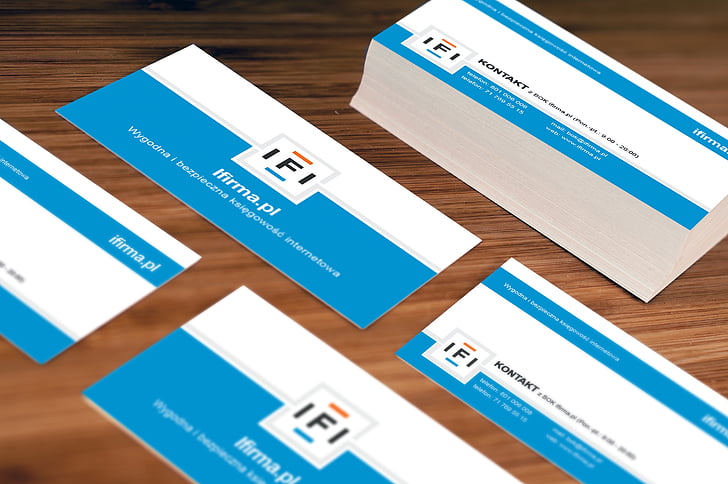Business cards have been used as a networking tool for decades. They’re a small but essential piece of collateral that can leave a lasting impression on potential clients or partners. One of the key decisions when designing business cards is choosing the right finish for them. Among the popular options, glossy and matte finishes are often compared against each other. In this article, we will delve into the differences between glossy and matte business cards to help you make an informed decision.
Glossy Business Cards
Pros and Cons Glossy business cards are known for their high-shine and reflective surface. The glossy finish is achieved by adding a layer of varnish or coating on top of the card, which creates a smooth and glossy appearance. Here are some of the pros and cons of using glossy business cards:

Pros:
- Glossy finishes can enhance the colors and images on the card, making them appear more vivid and bold.
- The shiny surface can create a luxurious and modern look, making them suitable for businesses in industries like fashion, beauty, or technology.
- Glossy finishes can be more durable and resistant to wear and tear, making them a good option for businesses that require frequent use of business cards.
Cons:
- The reflective surface can make it difficult to read the text on the card in certain lighting conditions.
- The high-shine finish can be seen as too flashy or unprofessional for some businesses.
- Glossy finishes can be more expensive compared to other finishes like matte.
Matte Business Cards
Pros and Cons Matte business cards have a non-reflective, flat finish. The matte finish is achieved by adding a layer of lamination or coating that diffuses light, resulting in a subdued and elegant look. Here are some of the pros and cons of using matte business cards:
Pros:
- Matte finishes offer a more subtle and understated look that can convey professionalism and elegance.
- The non-reflective surface makes it easier to read the text on the card in all lighting conditions.
- Matte finishes can be more cost-effective compared to other finishes like glossy.
Cons:
- The muted finish can make colors and images appear less vibrant compared to glossy finishes.
- The matte finish can be less durable and more prone to scratches or wear and tear compared to glossy finishes.
- Matte finishes may not be suitable for all designs, especially those that require high-resolution images or vibrant colors.
Design Considerations
When choosing between glossy and matte finishes, there are some design considerations to keep in mind. Here are a few things to consider:
Color: If your design relies heavily on color, glossy finishes can enhance the vibrancy and brightness of the colors. On the other hand, if your design is more subdued and monochromatic, a matte finish can add elegance and sophistication.
Text: If your business card contains a lot of text, a matte finish can make it easier to read, especially in certain lighting conditions. Glossy finishes, on the other hand, can make it harder to read the text due to the reflective surface.
Images: If your design contains high-resolution images, glossy finishes can make them appear more vivid and detailed. Matte finishes, on the other hand, can make images appear softer and more subdued.
Other Finishing Options
Apart from glossy and matte finishes, there are other finishing options that you can consider. Some of these include:
Satin finish: A satin finish is a hybrid between glossy and matte finishes. It offers a slight sheen without being too reflective, making it a good option for designs that require a subtle shimmer.
Spot UV: Spot UV is a technique that involves adding a glossy coating to specific areas of the design. This can create a unique and eye-catching effect, where certain elements of the design are highlighted with a glossy finish while the rest of the card remains matte.
Soft touch: A soft touch finish is a matte finish with a velvety texture. It adds a tactile element to the business card, making it feel premium and luxurious to the touch.
Textured finishes: There are various textured finishes available, such as linen, canvas, or leather textures. These finishes add a unique and tactile feel to the business card, making them stand out from standard glossy or matte finishes.
Consideration for Business Type and Target Audience
When choosing between glossy and matte business cards, it’s important to consider your business type and target audience. The type of finish you choose can convey a certain image or impression, and it should align with your brand personality and target audience’s preferences. For example:
- For businesses in industries like fashion, beauty, or technology, glossy finishes can convey a sense of modernity, luxury, and innovation.
- For businesses in industries like finance, law, or consulting, matte finishes can convey professionalism, sophistication, and elegance.
- For businesses targeting a younger and more vibrant audience, glossy finishes may be more appealing.
- For businesses targeting a more mature and sophisticated audience, matte finishes may be a better fit.
Budget Considerations
Budget is another important factor to consider when choosing between glossy and matte business cards. Glossy finishes tend to be more expensive due to the additional coating or varnish applied to the cards. Matte finishes, on the other hand, are usually more cost-effective. If you have a limited budget for your business cards, matte finishes may be a more practical option.
Durability and Practicality
The durability and practicality of the business cards are also important considerations. Glossy finishes can be more durable and resistant to wear and tear compared to matte finishes. The glossy coating provides an extra layer of protection, making the cards less prone to damage. However, glossy finishes can also be more prone to fingerprints and smudges due to their reflective surface. Matte finishes, on the other hand, may be more prone to scratches or wear and tear, but they are less likely to show fingerprints or smudges.
Personal Preference and Branding
Ultimately, personal preference and branding should also play a role in your decision. Consider your own preferences as well as your brand’s personality, values, and image. Think about the impression you want to leave with your business cards and how the finish can complement your overall branding efforts.
Conclusion
In the battle of finishes, glossy vs matte business cards, both options have their pros and cons. Glossy finishes can offer a vibrant and luxurious look, while matte finishes can convey professionalism and sophistication. Consider factors such as design, business type, target audience, budget, durability, and personal preference when making your decision. Remember that the finish you choose should align with your brand personality and image, and ultimately leave a positive impression on your potential clients or partners. Whichever finish you choose, make sure your business cards are well-designed and printed on high-quality cardstock to make a lasting impression in your networking efforts.












